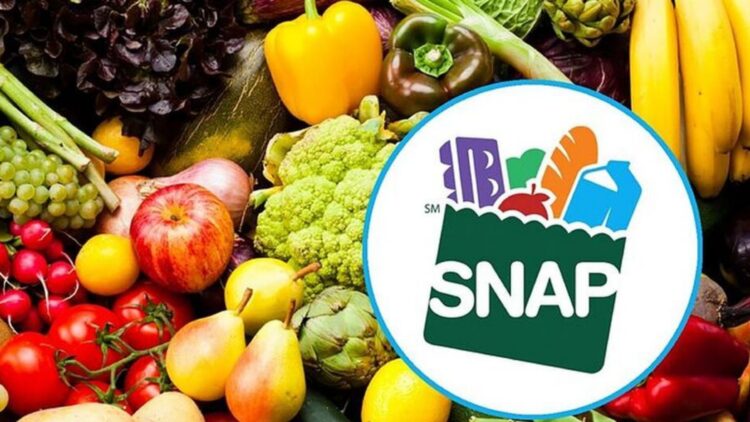One of the most important assistance requested by families in the United States is the Supplemental Nutrition Assistance Program (SNAP). It is a program administered by the U.S. Department of Agriculture (USDA) to ensure that all families and individuals with limited resources have access to nutritious food. It is done through the receipt of “vouchers” on EBT cards, through which individuals can make purchases. Each participating state manages SNAP under federal guidelines, but with some flexibility.
This is the case of SNAP in Puerto Rico, which adapts its circumstances while respecting the objective of the assistance. The basic requirements to be eligible for this assistance include being a U.S. citizen or a legal alien, and having income below 130% of the Federal Poverty Level. According to the Center on Budget and Policy Priorities, in 2025 the average amount for an 8-person household will be approximately $1,756. This program provides essential and basic assistance to those who, due to the economic crisis in the United States, would not be able to access healthy and nutritious food if they depended on their own income.
Supplemental Nutrition Assistance Program (SNAP)
SNAP is one of the most requested social programs by citizens in the United States. Given the country’s delicate economic situation, this assistance has been a real salvation for many families, who otherwise would not have access to nutritious and healthy food. This program, administered by the U.S. Department of Agriculture (SDA), provides a monthly income through EBT cards, through which only basic food products can be purchased.
What are the requirements to be eligible for SNAP?
Not just any citizen can access this program, but must meet the following two requirements:
- Present limited financial resources. Households in need of SNAP must demonstrate that their income is less than 130% of the federal poverty level. Assets such as owning a home or a work vehicle are not eligible for this assistance, although other assets such as the amount of money saved are taken into account.
- Residency and citizenship. Beneficiaries must be U.S. citizens or legal aliens. In addition, they must reside in the state to which they are applying.
Although SNAP is governed under federal guidelines, each territory can organize it according to its own characteristics. This is the case of Washington D.C., Puerto Rico, Guam, the Virgin Islands and American Samoa, with the 48 joint states. In the case of Puerto Rico and Guam, the NAP is given, adapted to their characteristics but respecting the main objective of this food aid.
SNAP figures
Not all households have the same characteristics, so they do not all receive the same amounts. The amount will vary depending on the size of the household and the net income received. According to the Center on Budget and Policy Priorities (CBPP), the maximum amount is set at $1,756 for 8-person households. The figures by household size in D.C. and contiguous states are:
- 1 person: $291.
- 2 people: $535.
- 3 people: $766.
- 4 people: $973.
- 5 people: $1,155.
- 6 people: $1,386.
- 7 people: $1,532.
- 8 people: $1,756 (Maximum base).
- More than 8 people, $219 is added for each additional member.
Payment Schedule
Entry dates vary by state or territory. At least 28 jurisdictions distribute their payments during the week of July 12-19:
- Alabama (Distribution between July 4 and 23).
- Arizona (Distribution between July 1 and 13 – Includes 12 and 13).
- Arkansas (Distribution between July 4 and 13 – Includes 12 and 13).
- Delaware (Distribution between July 2 and 23).
- Florida (Distribution between July 1 and 28).
- Georgia (Distribution between July 5 and 23).
- Illinois (Distribution between July 1 and 20).
- Indiana (Distribution between July 5 and 23).
- Kentucky (Distribution between July 1 and 19).
- Louisiana (Distribution between July 1 and 23).
- Maine (Distribution between July 10 and 14).
- Maryland (Distribution between July 4 and 23).
- Massachusetts (Distribution between July 1 and 14 – Includes 12-14).
- Michigan (Distribution between July 3 and 21).
- Minnesota (Distribution between July 4 and 13 – Includes 12 and 13).
- Mississippi (Distribution between July 4 and 21).
- Missouri (Distribution between July 1 and 22).
- New Mexico (Distribution between July 1 and 20).
- North Carolina (Distribution between July 3 and 21).
- Ohio (Distribution between July 2 and 20).
- Pennsylvania (Distribution between July 3 and 14).
- Puerto Rico (Distribution between July 4 and 22 – Under the PAN program).
- South Carolina (Distribution between July 1 and 19).
- Tennessee (Distribution between July 1 and 20).
- Texas (Distribution between July 1 and 28).
- Utah (Distribution on July 5, 11, and 15 – The 15th is within range).
- Washington (Distribution between July 1 and 20).
- Wisconsin (Distribution between July 1 and 15 – Includes 12-15).
